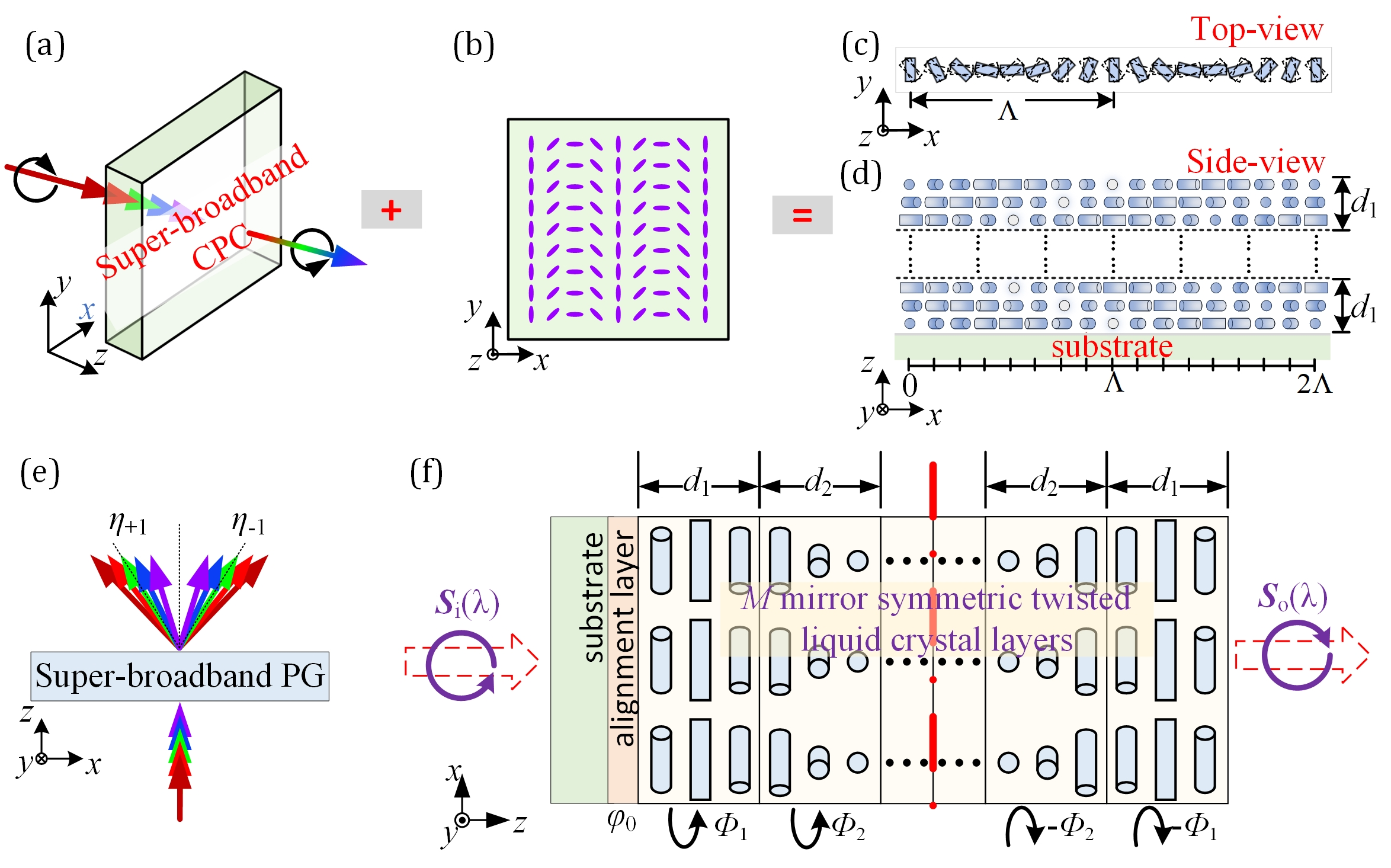Author: |
Editor: CHEN Wan | Oct 25, 2021
Geometric phase devices (GPDs) are a new type of planar, ultra-thin, and arbitrarily constructible optical element, which have a wide application prospect in lidar, augmented reality, spectral imaging, and other fields. In order to apply the GPD to these scenarios, it needs to be designed and optimized to increase its working waveband.
In general, the design of high-efficiency wideband GPDs is achieved by implementing multiple twisted layers in the thickness direction. However, nonlinear unconstrained numerical optimization is needed for multiple variables, which becomes more and more difficult with the increase of the number of twisted layers. Therefore, it is necessary to develop a simple and effective theoretical design principle and method for wideband GPDs.
In a study published in Applied Physics Letters, a research group led by Prof. MU Quanquan from Changchun Institute of Optics, Fine Mechanics and Physics (CIOMP) of the Chinese Academy of Sciences (CAS) proposed a simplified design method for wideband GPDs, which can be simply understood as unit optimization method.
In this method, GPDs are reduced to achromatic circular polarization converters (CPCs) considering the connection between geometric phase and the optical axis of birefringent materials and the connection between high diffraction efficiency and circular polarization state conversion. The CPC is considered as the structural unit of the GPD, which reduces the design dimension.
Under the premise of the same number of twisted layers, the mirror symmetric structure can always provide a wider achromatic bandwidth. As a result, mirror symmetry halves the design parameters.
Based on the above design principles, a four-layer super-broadband liquid crystal polarization grating is designed. Considering the birefringence dispersion, the diffraction efficiency is over 99% in the range of 420-945 nm. This design can also provide a satisfactory angular response. This simple design method probably become a better means for the design of GPDs with wideband and large view angle.

Fig. 1. (a) Ideal polarization conversion of super-broadband CPCs. (b) The optical axis orientations of polarization gratings (PGs) by geometric phase hologram. (c) A schematic diagram of the multi-twist super-broadband PGs in top-view and (d) side-view. (e) Diffraction behavior of super-broadband PGs. (f) Illustration of the mirror symmetric self-aligned multi-twist structure. The LC layers show mirror symmetry about the center of the total thicknesses (Images by CHEN).
Contact:
Auther: Prof. Mu Quanquan
Changchun Institute of Optics, Fine Mechanics and Physics, Chinese Academy of Sciences
Changchun, Jilin 130033, China
E-mail: muquanquan@ciomp.ac.cn
Article links: https://aip.scitation.org/doi/10.1063/5.0060647
